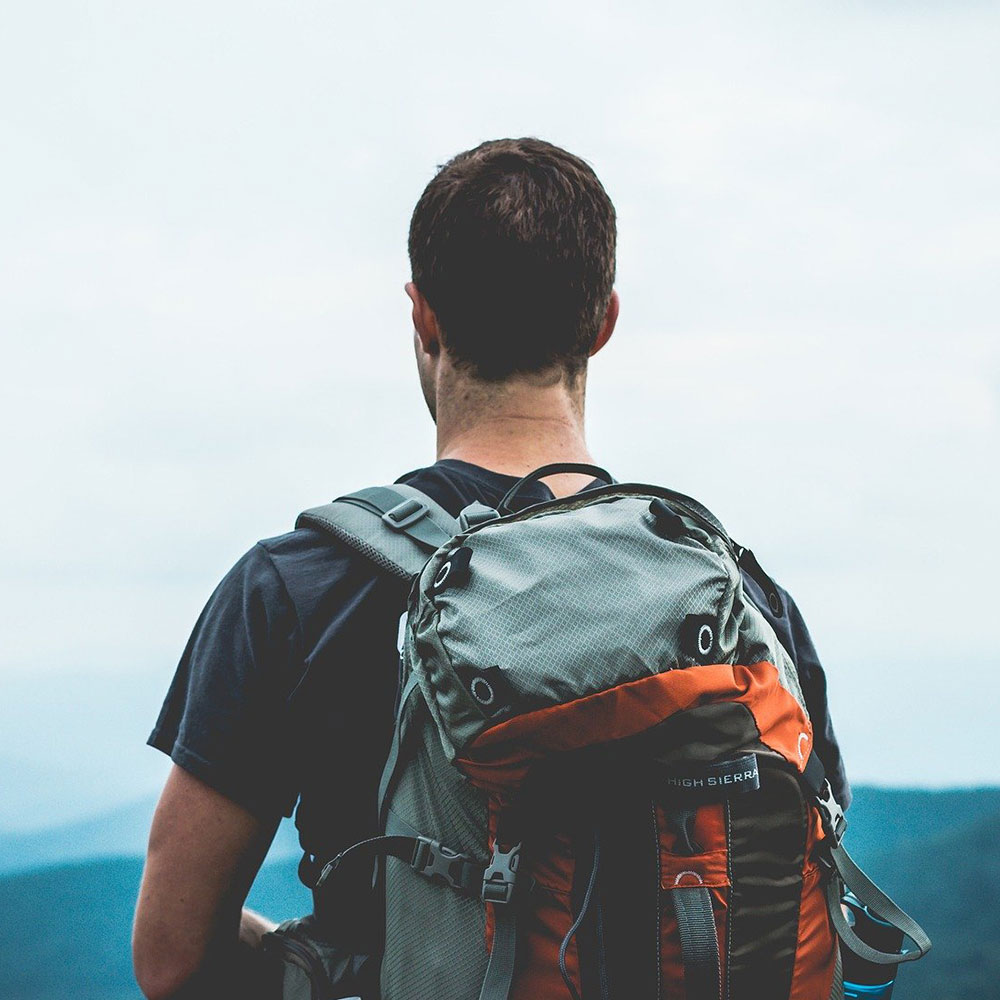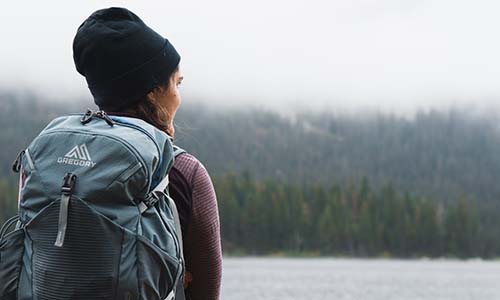Learn How to Hike with a Heavy Backpack
Author

Javier Olivo is a blogger and a writer by heart. In the past, Javier worked as a woodcarver in a furniture store in his hometown. Being exposed to the outdoors, he often likes to give advice to people who prefer trekking in the woods. During his free time, Javier loves going to the gym and playing football.
They say even a straw is heavy for a long journey, and in a long hike you need to manage the weight of your backpack.
Going on an adventurous hike, you always wish to carry every important thing in your backpack. But carrying too much can make it heavy and might stop you from completing your journey the way you expected. Packing light is an admired skill that a person learns with experience, time, and of course, by making a lot of mistakes.
Who knew that a little research and planning before you head towards your destination could help you become an ultralight backpacker? Yes, there are a few simple tips that can help you carry that heavy load as if it’s a cakewalk.
Continue reading this useful piece of knowledge and see how.
Advance Planning is the First Step
There are some crucial points you need to consider before making it for the journey. Check the weight of your backpack, see what gears you’re going to carry and how much they weigh, what is the extent of the trip, the weather conditions  and also, the terrain. This little planning and research will help you determine the difference between your wants and needs. Try to keep your wants at home and go with your needs.
and also, the terrain. This little planning and research will help you determine the difference between your wants and needs. Try to keep your wants at home and go with your needs.
Right Size of the Backpack
After all the planning, your next step is to select the right size of backpack that can carry your gear and fit your body size. People generally start calculating the ratio of the backpack’s weight to body size and find the right choice. But it is good to go to your nearby gear shop and ask the expert to choose the right fit for you. Remember, a pack that fits properly can make your journey an absolute breeze when it is about carrying heavy loads.
Next is How You Distribute the Weight
After you decide what to carry and if you realise that it is going to be heavy, no matter what, then keep your focus on “How to Pack it”. Hikers and backpackers ensure that all the heavy items are kept in the middle of their pack, so the weight is distributed evenly. Conversely, if you’re travelling with your toddler, you’re left with not many options on how to distribute the weight on your back.
Route Choice Also Matters
Spend some quality time deciding the route to your destination that can offer you a gentle altitude, after all, you’re going to work hard for that final view. Look closely around your surroundings to avoid areas that are challenging to walk on. One should also be aware of their physical limitations and how the weight of  your backpack can affect you or how much energy you’re going to spend when on the hike. To get used to with heavy backpacking trips, you can first, go on a few short day trips and get a little experience. Also, you can take some extra days for your trip, so you enjoy the venture at your pace.
your backpack can affect you or how much energy you’re going to spend when on the hike. To get used to with heavy backpacking trips, you can first, go on a few short day trips and get a little experience. Also, you can take some extra days for your trip, so you enjoy the venture at your pace.
Use Your Gear Considerately
Last but not the least, you need to be extra careful while you put the backpack on and take it off. You can crutch the bag up on a stump or a log, asking for help can also be considered, and when you keep the pack on, just squat down, which helps prevent straining your back. If you’re taking a trekking pole along, make use of the straps properly and follow the right poling technique. Walking poles can keep your body stable when walking through a difficult path.
So, these were a few helpful ways you can try to carry that heavy bag with great ease. Happy Hiking!
Author

Javier Olivo is a blogger and a writer by heart. In the past, Javier worked as a woodcarver in a furniture store in his hometown. Being exposed to the outdoors, he often likes to give advice to people who prefer trekking in the woods. During his free time, Javier loves going to the gym and playing football.
Categories
- Sport (28)
- Product Reviews (3)
- Team Outdoor Look (7)
- Mike Wild (2)
- Mike Payton (2)
- Suse Hammond-Pears (3)
- Snowboarding (12)
- Latest Offers (105)
- Shop Talk (1)
- Competitions (7)
- Walking (413)
- Lifestyle Fashion (8)
- Travel (86)
- Kit Guides (176)
- Workwear Clothing (6)
- Safety Workwear (4)
- Health/Fitness (289)
- Skiing (91)
- Great Outdoors (1316)
- Cycling (92)
- January 2025
- December 2024
- November 2024
- October 2024
- September 2024
- August 2024
- July 2024
- June 2024
- May 2024
- April 2024
- March 2024
- February 2024
- January 2024
- December 2023
- November 2023
- October 2023
- September 2023
- August 2023
- July 2023
- June 2023
- May 2023
- April 2023
- March 2023
- February 2023
- January 2023
- December 2022
- November 2022
- October 2022
- September 2022
- August 2022
- July 2022
- June 2022
- May 2022
- April 2022
- March 2022
- February 2022
- January 2022
- December 2021
- November 2021
- October 2021
- September 2021
- August 2021
- July 2021
- June 2021
- May 2021
- April 2021
- March 2021
- February 2021
- January 2021
- December 2020
- November 2020
- October 2020
- September 2020
- August 2020
- July 2020
- June 2020
- May 2020
- April 2020
- March 2020
- February 2020
- January 2020
- December 2019
- November 2019
- October 2019
- September 2019
- August 2019
- July 2019
- June 2019
- May 2019
- April 2019
- March 2019
- February 2019
- January 2019
- December 2018
- November 2018
- October 2018
- September 2018
- August 2018
- July 2018
- June 2018
- May 2018
- April 2018
- March 2018
- February 2018
- January 2018
- December 2017
- November 2017
- October 2017
- September 2017
- August 2017
- July 2017
- June 2017
- May 2017
- April 2017
- March 2017
- February 2017
- January 2017
- December 2016
- November 2016
- October 2016
- September 2016
- August 2016
- July 2016
- June 2016
- May 2016
- April 2016
- March 2016
- February 2016
- January 2016
- December 2015
- November 2015
- October 2015
- September 2015
- August 2015
- July 2015
- June 2015
- May 2015
- April 2015
- March 2015
- February 2015
- January 2015
- December 2014
- November 2014
- October 2014
- September 2014
- August 2014
- July 2014
- June 2014
- May 2014
- April 2014
- March 2014
- February 2014
- January 2014
- December 2013
- November 2013
- October 2013
- September 2013
- August 2013
- July 2013
- June 2013
- May 2013
- April 2013
- March 2013
- February 2013
- January 2013
- December 2012
- November 2012
- October 2012
- September 2012
- August 2012
- July 2012
- June 2012
- May 2012
- April 2012
- March 2012
- February 2012
- January 2012
- December 2011
- November 2011
- October 2011
- September 2011
- August 2011
- May 2010
- April 2010
- March 2010
- February 2010
- January 2010
- November 2009
- October 2009
- September 2009
Submit a Comment